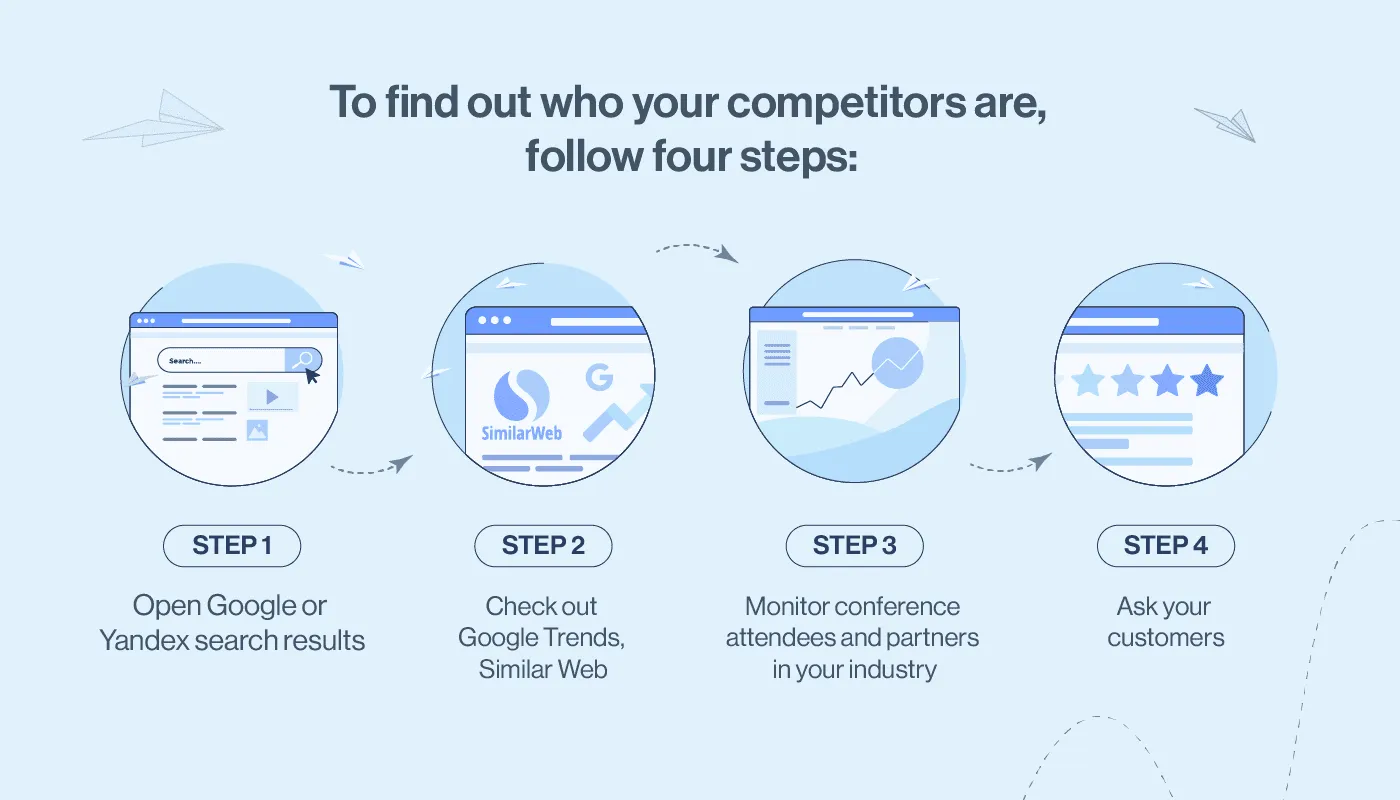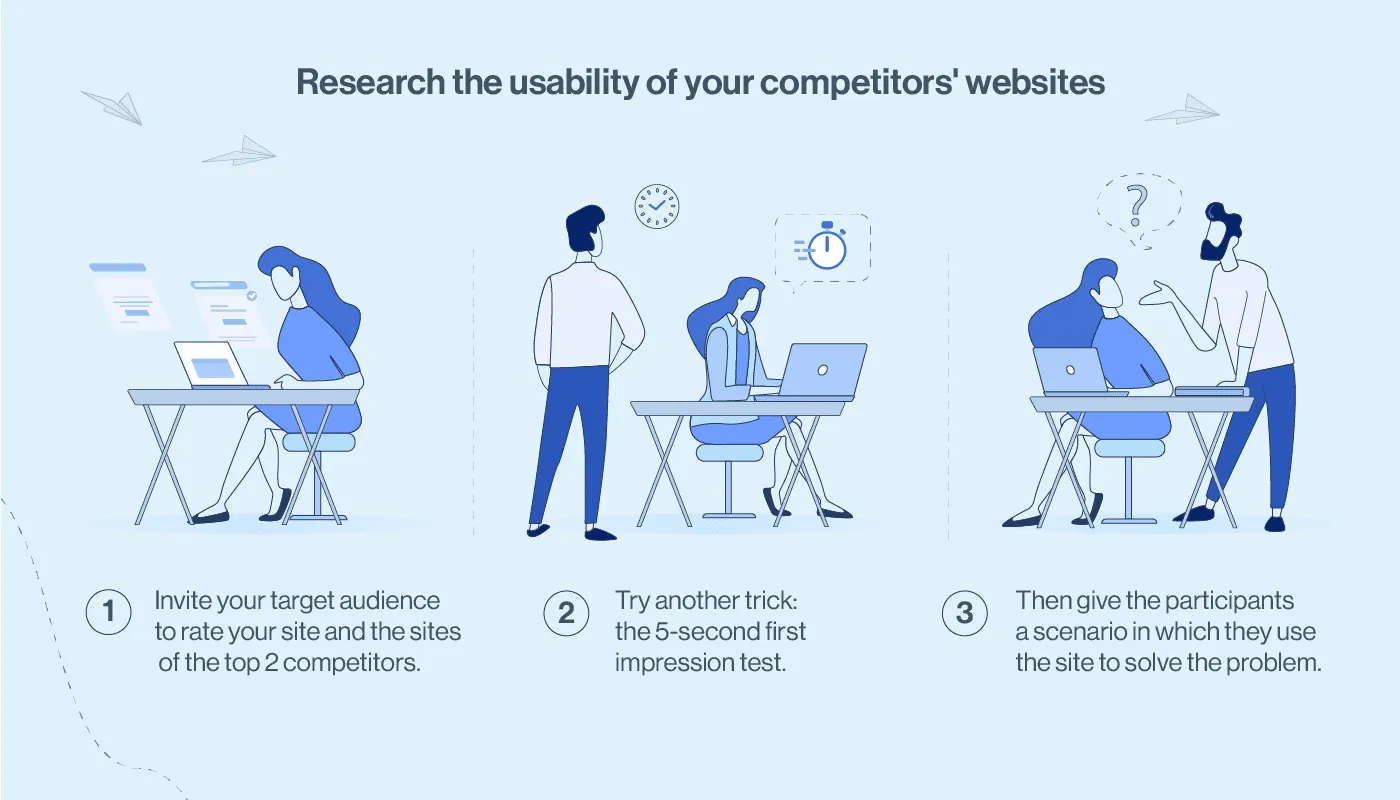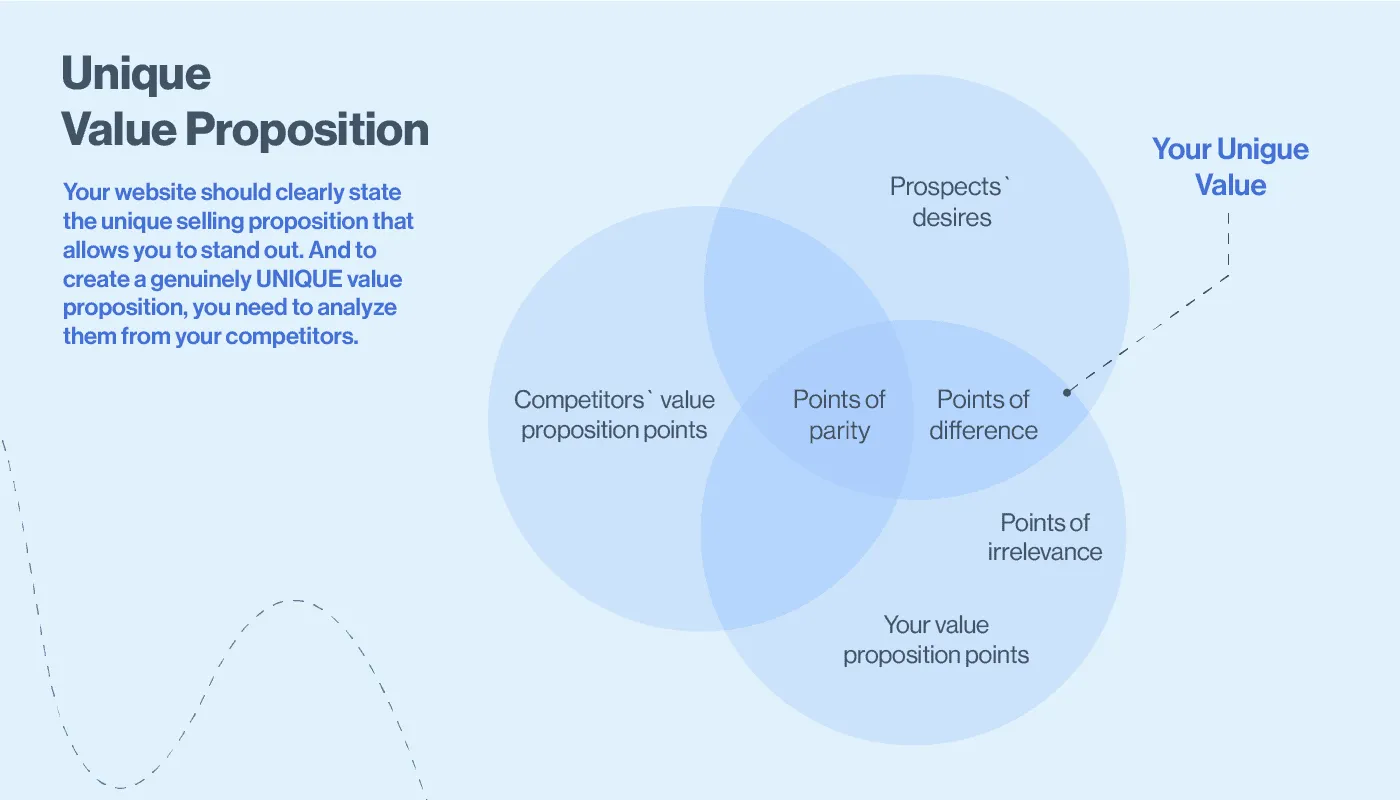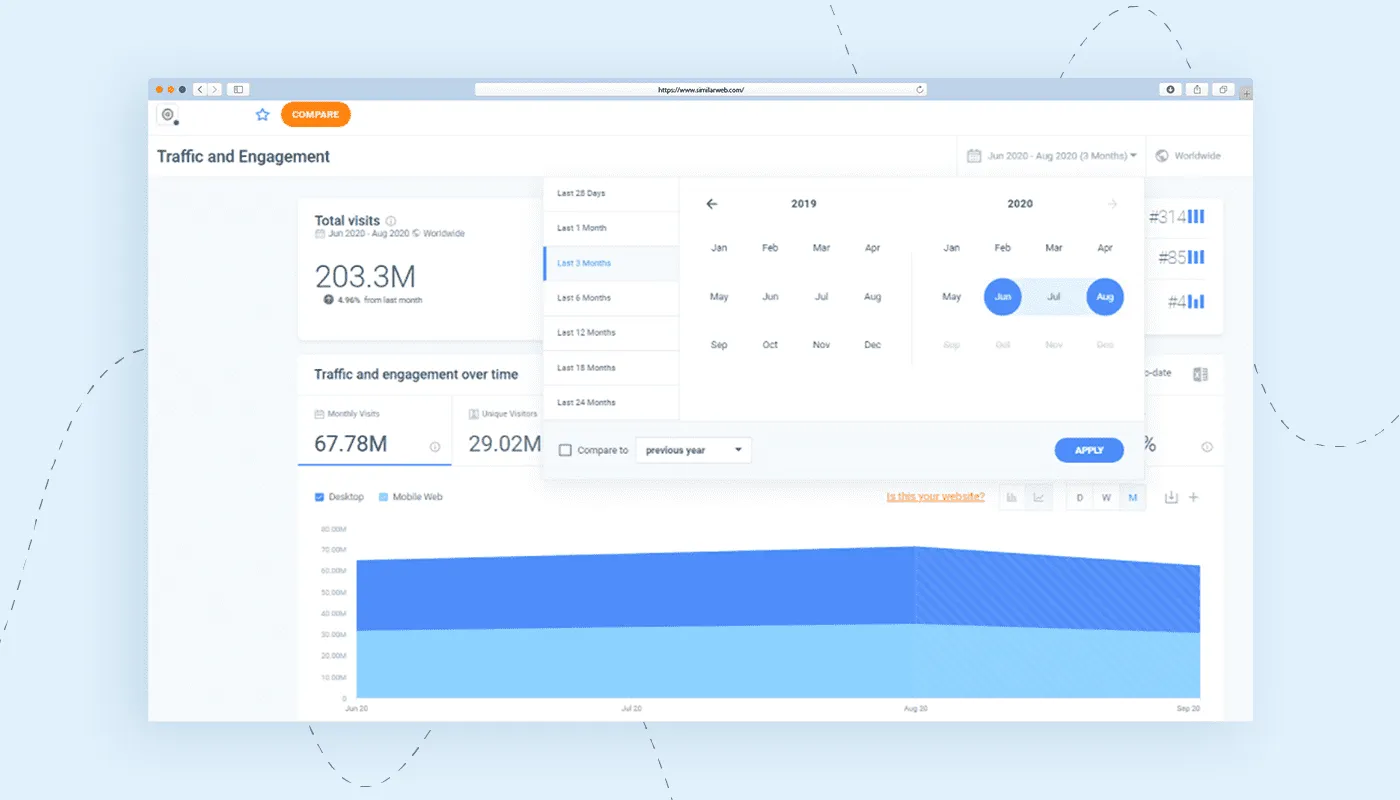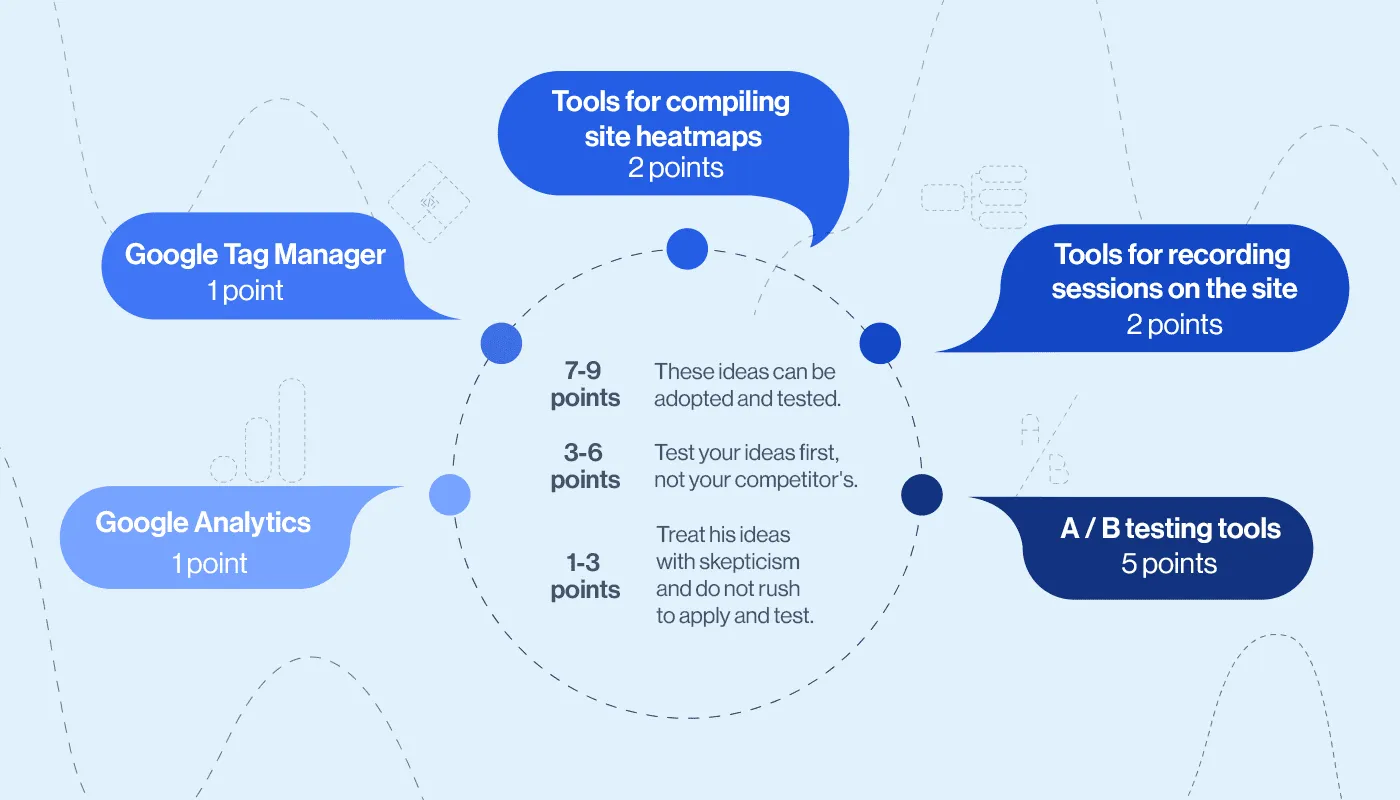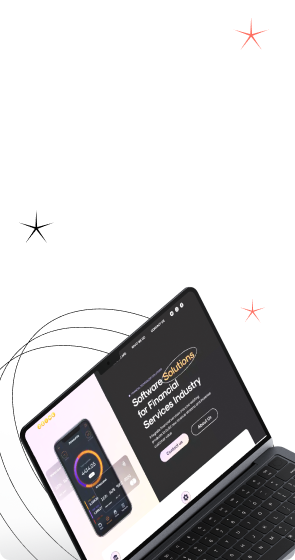To correctly understand how to promote your site among many competitive websites or apps, you need to analyze them all. This information will give answers to questions about where to start your improvement road. At the same time, it is necessary to understand all the nuances and terminology so that the collected data can be used optimally later. The main task is to analyze your competitors correctly because if you know how they work and where they’re better than you, you will make your job easier. You will also find many ways to bypass and surpass your opponents, spending a minimum amount of time on it.
UX design competitive analysis is an integral part of any business strategy. If you don’t know your competitors, it is impossible to understand how to overcome them and where to focus your efforts. Those companies that conduct user experience competitive analysis and use it to develop a promotion strategy are ahead of at least half of their competitors.
Most companies don’t have a specific strategy. Understanding the strengths and weaknesses of competitors is essential to gaining a competitive advantage. If you don’t run the analysis or update it often enough, you are at risk. That is why today we want to discuss why you need competitive analysis, what advantages it will give your product, and why it is essential for your business.


